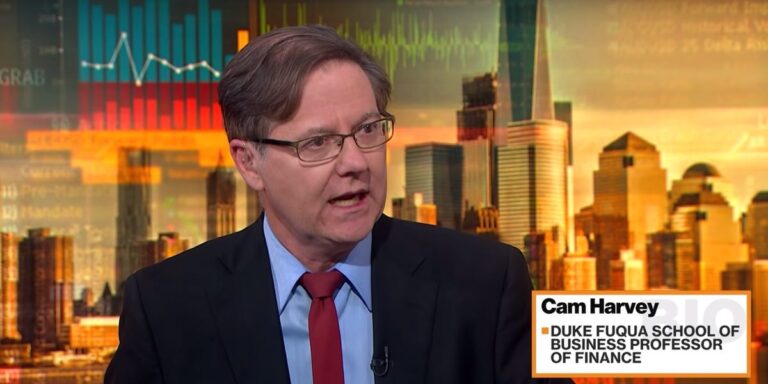- An inverted yield curve means a recession remains likely, the creators of the indicator wrote this week.
- However, factors such as excess labor demand and a strengthening housing market will mitigate the impact.
- The economist said the Fed has got inflation wrong and should cut interest rates immediately.
The inverted yield curve has been flashing red for 15 months, but just because the economy is performing well shouldn't mean it's a false signal, Campbell Harvey wrote in a note from Research Affiliates.
Harvey is known for discovering the most popular recession indicator: when short-term Treasury yields exceed long-term Treasury yields, it signals an impending recession.
This has proven true in every recession since the 1960s, and the current reversal indicates that a recession is likely again this year, but several factors will limit the scope of the impending slowdown and help the U.S. achieve a soft landing.
“Given the track record of yield curve indicators, it would be very dangerous to ignore them,” the Duke University economist said. “The yield curve indicators suggest a significant slowdown in growth in 2024. This slowdown in growth may or may not be accompanied by a recession. Even in a soft-landing scenario, a small recession is possible.”
First, excess demand for labor makes a deep recession unrealistic. The gap between job openings and job seekers is so large (roughly 2.5 million people) that unemployment rates will not rise immediately even if the economy starts to slow. As more workers keep their jobs, consumer spending levels will remain strong.
Meanwhile, today's strength in the housing market will likely avert the foreclosure crisis that occurred during the 2008 recession, when debt levels were excessive and many homeowners owed more than their homes were worth.
This time, thanks in part to the massive price appreciation that has taken place during the pandemic, housing market equity has exceeded mortgage debt: At the end of 2023, Americans had $30 trillion in home equity but $17 trillion in outstanding mortgage debt.
On the business side, past experiences with inverted yield curves have led companies to take precautions when Treasury rates invert. Through 2023, business investment has retreated and some companies have implemented job cuts.
“Leaner companies are much more likely to survive a downturn, and this type of risk management has positive consequences as it reduces the volatility of business cycles,” Harvey wrote.
Still, it's unclear where the U.S. economy is headed. Harvey believes the Federal Reserve has raised interest rates too much, increasing the risk of a recession. He said the central bank is misreading inflation reports because housing inflation is actually lower than reported.
When recalculated, the year-on-year CPI would fall below the Fed's target interest rate of 2%.
“To me, the most effective way to mitigate a recessionary scenario would be for the Fed to reverse course quickly. Ideally, the Fed Funds rate should be at 3.5% by the end of the year (currently 5.25%), with rate cuts beginning immediately.”

